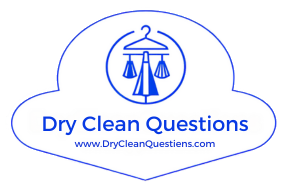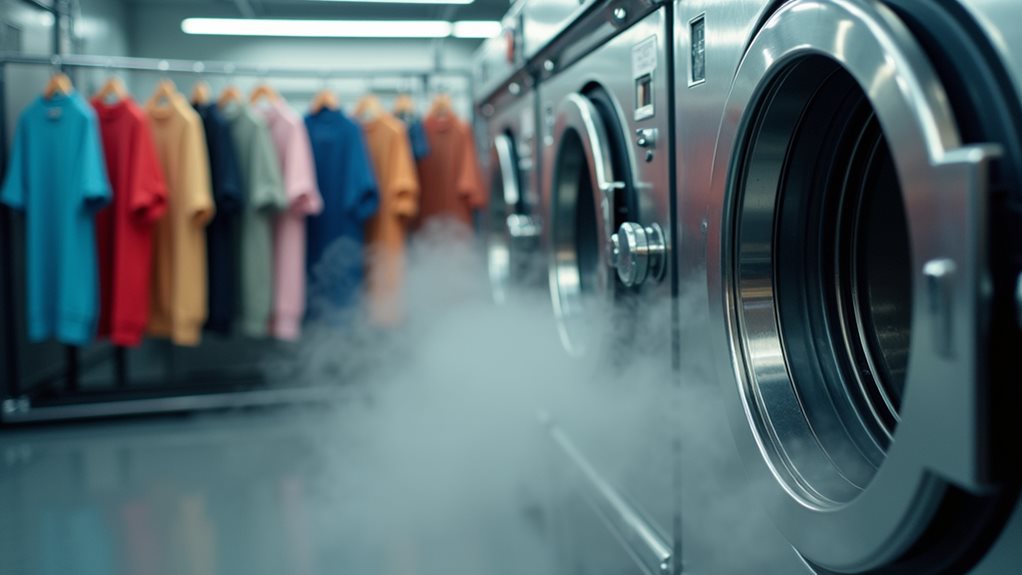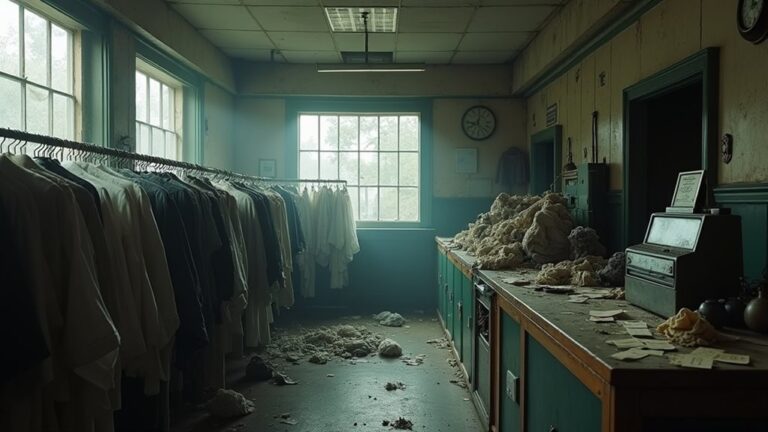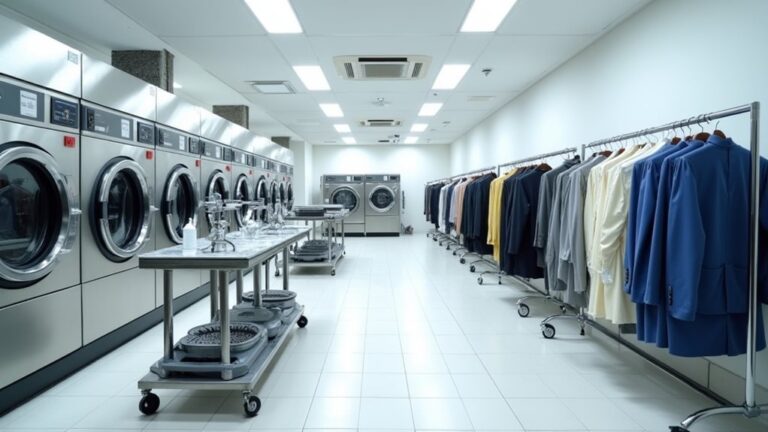Running a dry cleaning business is surprisingly challenging, requiring $200,000-$500,000 in startup costs, maneuvering fierce local competition, and mastering complex zoning regulations while managing expensive equipment that can cost up to $40,000. You’ll face declining demand from remote work trends, spend $30-150 acquiring each customer, and constantly train staff on delicate fabric care. The visible wrinkled clothes you see don’t guarantee profitability, and market saturation makes standing out incredibly difficult—though understanding these hurdles can transform your approach.
Market Research and Competition Analysis Challenges
When I first decided to open my dry cleaning business three years ago, I made the classic rookie mistake of assuming that because I saw people walking around in wrinkled clothes, there was automatically a huge demand for my services – boy, was I wrong! 😅
Market research isn’t just about counting how many suits you see on the street; it’s about diving deep into your community’s actual spending habits, lifestyle preferences, and whether they’re the type of people who’d rather invest in professional cleaning or just toss everything in their home washer.
Competition analysis became my reality check when I discovered four other dry cleaning businesses within walking distance, each targeting the same market with similar pricing strategies and service offerings, forcing me to scramble for a unique selling proposition like eco-friendly cleaning to survive the local demand battle.
The industry’s ongoing consolidation trends mean that major chains are expanding their footprint while independent operators fight for market share, making it even more challenging for new entrants to establish themselves in an already crowded marketplace.
Financial Investment and Equipment Costs
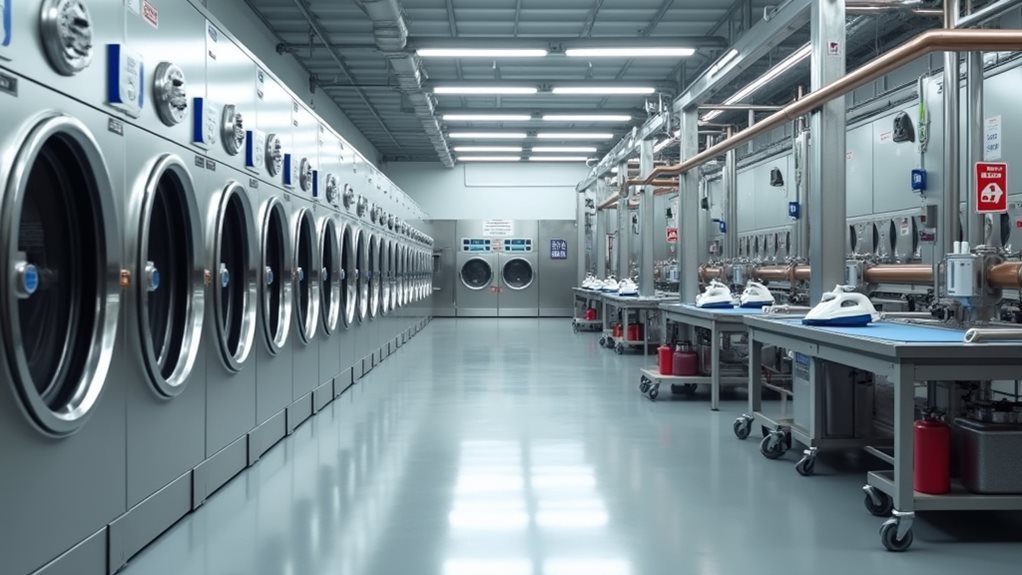
After walking into that first equipment showroom with stars in my eyes and a modest $50,000 budget, I quickly learned that the financial reality of dry cleaning equipment hits harder than a wrinkled shirt after a long day – those gleaming commercial machines I’d been dreaming about weren’t just expensive, they were investment-grade expensive, with basic dry cleaning units starting around $15,000 and top-tier models easily pushing $40,000 or more per machine.
Your startup costs will stretch beyond crucial equipment:
- Monthly commercial property costs including rent, utilities, and insurance
- Licensing fees varying dramatically by location and regulatory requirements
- Employee payroll determining your operational capacity and service quality
Smart financial investment means balancing equipment costs with profitability projections, because commercial laundry equipment represents your business’s beating heart. Most entrepreneurs need to prepare for total startup costs ranging from $200,000 to $500,000 to properly launch their dry cleaning operation with adequate working capital and professional-grade equipment.
Location Selection and Operational Setup Difficulties
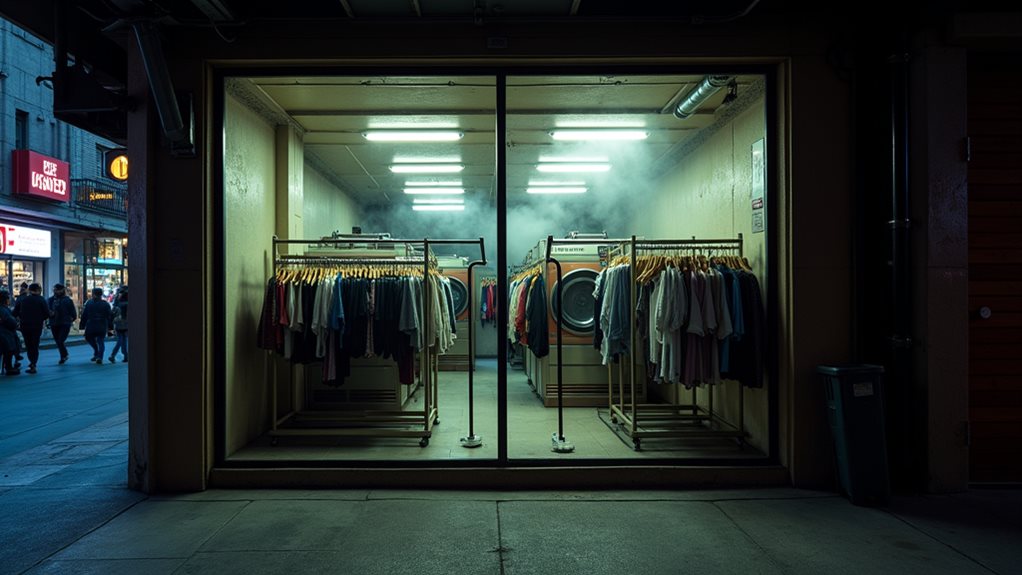
While I thought finding the perfect storefront would be as simple as driving around until I spotted a “For Lease” sign in a busy strip mall, the reality of location scouting quickly taught me that choosing where to plant your dry cleaning flag involves maneuvering through a maze of zoning laws, rental negotiations, and competitive analysis that would make a chess master’s head spin.
Your location selection process starts with understanding zoning regulations, which can eliminate half your options before you even begin.
Then you’re wrestling with rental costs that’ll make your wallet weep, especially in high-traffic areas where customer visibility matters most.
Don’t forget ample parking – because nobody wants to circle blocks for your services.
Competition analysis reveals market saturation faster than you’d expect, making operational setup for a successful dry cleaning business feel like strategic warfare.
With approximately 30,000 to 35,000 dry cleaning establishments already operating across the United States, you’ll quickly discover that finding an underserved market requires extensive research and strategic positioning.
Staff Management and Service Quality Maintenance
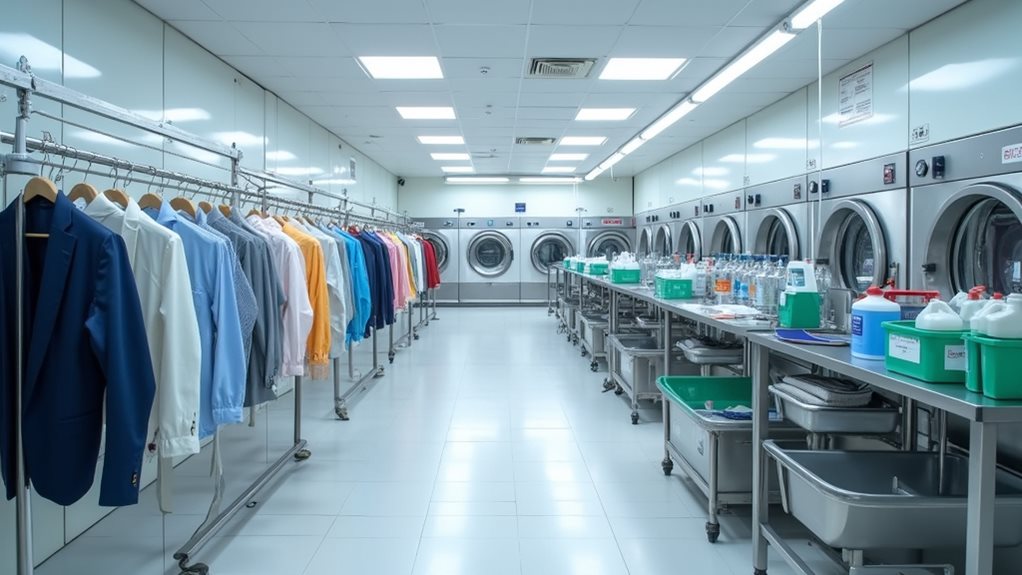
Because I learned the hard way that a sparkling storefront means nothing if your team treats customers’ prized possessions like yesterday’s laundry, mastering staff management became my crash course in understanding that your employees are literally the backbone of your service quality.
You’ll discover that effective staff management can boost operational efficiency by 30%, while proper training sessions increase repeat customers by 20%.
Here’s what transformed my chaotic operation:
- Define clear roles and responsibilities – Specialized positions increase productivity by 25% and eliminate that awkward “not my job” dance.
- Implement regular training sessions on stain removal and customer service delivery techniques.
- Establish systematic customer feedback collection to continuously improve service quality.
When you prioritize customer satisfaction through strategic staff management, you’re not merely running a business – you’re building lasting relationships that generate 40% more referrals.
Additionally, investing in comprehensive garment care training ensures your team can handle delicate fabrics and complex stains with the expertise customers expect from a professional dry cleaning service.
Customer Acquisition and Business Growth Obstacles
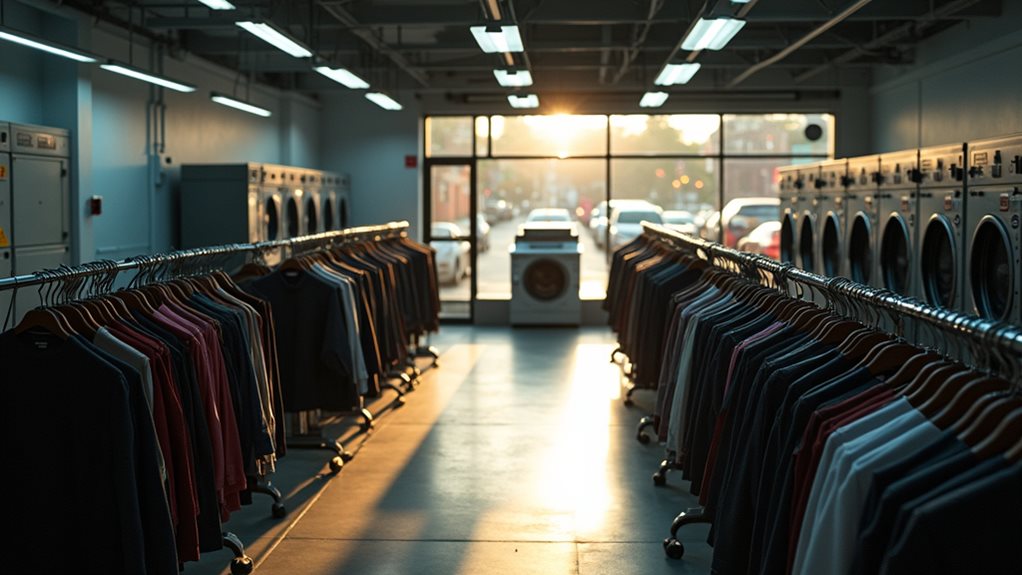
Three months into running my dry cleaning business, I watched potential customers peek through my pristine windows, hesitate for exactly four seconds, then walk straight to my competitor across the street – and that soul-crushing moment taught me that customer acquisition isn’t just about having the best equipment or friendliest staff.
You’ll quickly discover that business growth in the dry cleaning industry requires multiple touchpoints, costing anywhere from $30-150 per new customer. Rising operational costs, seasonal fluctuations during holidays, and shifting consumer preferences create constant obstacles for customer retention and revenue forecasting.
Your marketing strategies must include building an online presence and forming partnerships with local businesses, because without these connections, even the most pristine windows won’t stop those four-second hesitations. The industry faces additional pressure from changing fashion trends toward more casual, washable clothing and the impact of remote work reducing demand for professional attire that traditionally drove dry cleaning revenue.
